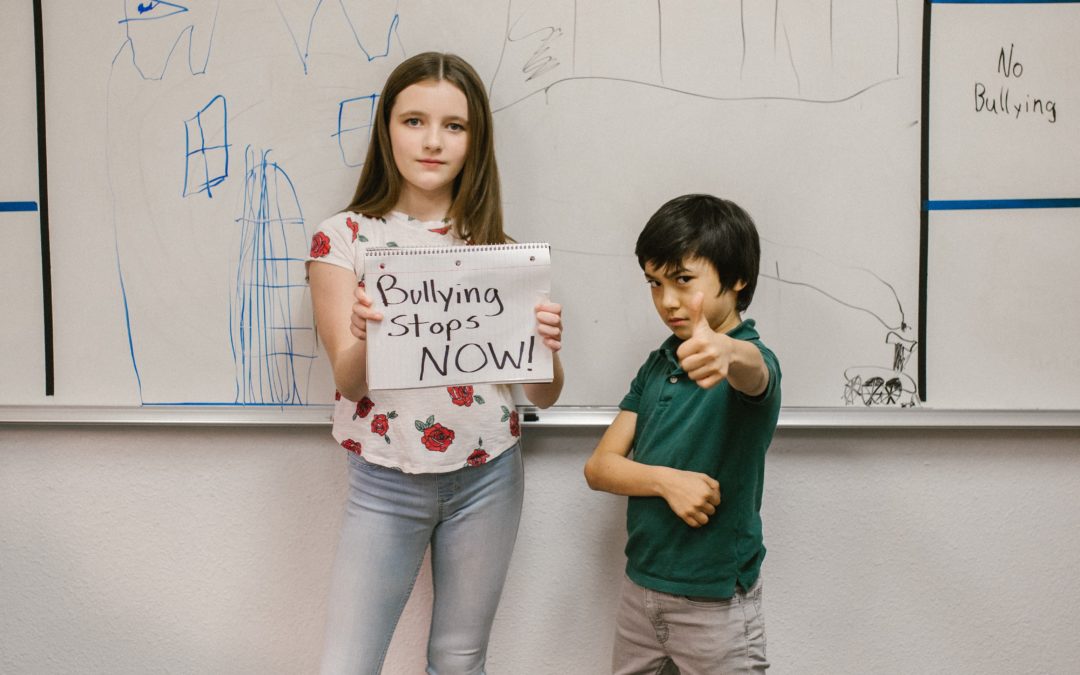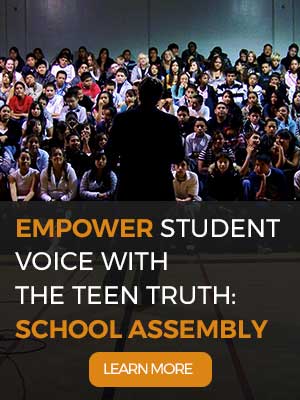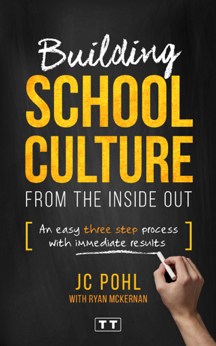A Guide to Stopping Bullying at School
As much as we don’t like to admit it, bullying is as prevalent in schools as gym class and homework. According to the Cyberbullying Research Center, school bullying rates have increased by 35% from 2016 to 2019. Sadly, some people even consider being bullied (or being a bully) to be some right-of-passage for children and adolescents, akin to your first school dance or learning how to drive.
However, just because bullying has become heavily normalized in our society does not mean it needs to be accepted. Schools, parents, and even kids are all responsible for putting an end to bullying and its often disastrous effects – but how?
Understanding Bullying at School
Before we can discuss ways to prevent bullying in school, we need to properly define what bullying is, how it comes to be, and the different ways in which it manifests itself.
Bullying refers to the use of force, coercion, hurtful teasing, or threats to abuse, intimidate, or aggressively dominate another person. While bullying can happen to anyone at any age, it is typically experienced most often during childhood and adolescent years. Bullying is different from simple disagreements or fights; a power imbalance must exist for a situation to be considered bullying.
As children grow and learn social behaviors, it is common for children with aggressive or anti-social tendencies to become bullies. While most children will at some point or another exhibit behavior that aligns with bullying, it is imperative to know which behaviors parents and teachers should be concerned with.
Definitions and Background Information
Since October is National Bully Prevention Month, I thought I’d take some time to write about the ways that counselors, teachers, mental health professionals, and activity directors can promote anti-bullying efforts in their schools!
National Bullying Prevention Month occurs across the world! Its purpose is for individuals and organizations to come together and share resources to raise awareness for the prevention of bullying.
What exactly is bullying, you might ask? Well, it is defined by the following three characteristics:
- Repeated: A bully bothers the same victim over and over again.
- Intentional: A bully hurts someone on purpose, not accidentally.
- Power Imbalance: The bully has more power (through characteristics such as size, popularity, age, etc.) than his/her victim.
As the bullying prevention movement grows, new legislation is spreading across the US in order to protect kids. Here are a few interesting facts about bullying legislation:
- There is no federal law that protects against bullying; however many bullying incidents can be prosecuted as harassment if the offense meets certain criteria.
- Georgia was the first state to pass anti-bullying legislation in 1999.
- New Jersey has some of the toughest bully legislation in the US, where schools must report incidences of bullying to state agencies!
- Texas passed David’s Law in September 2017, which protects Texas children against instances of cyberbullying.
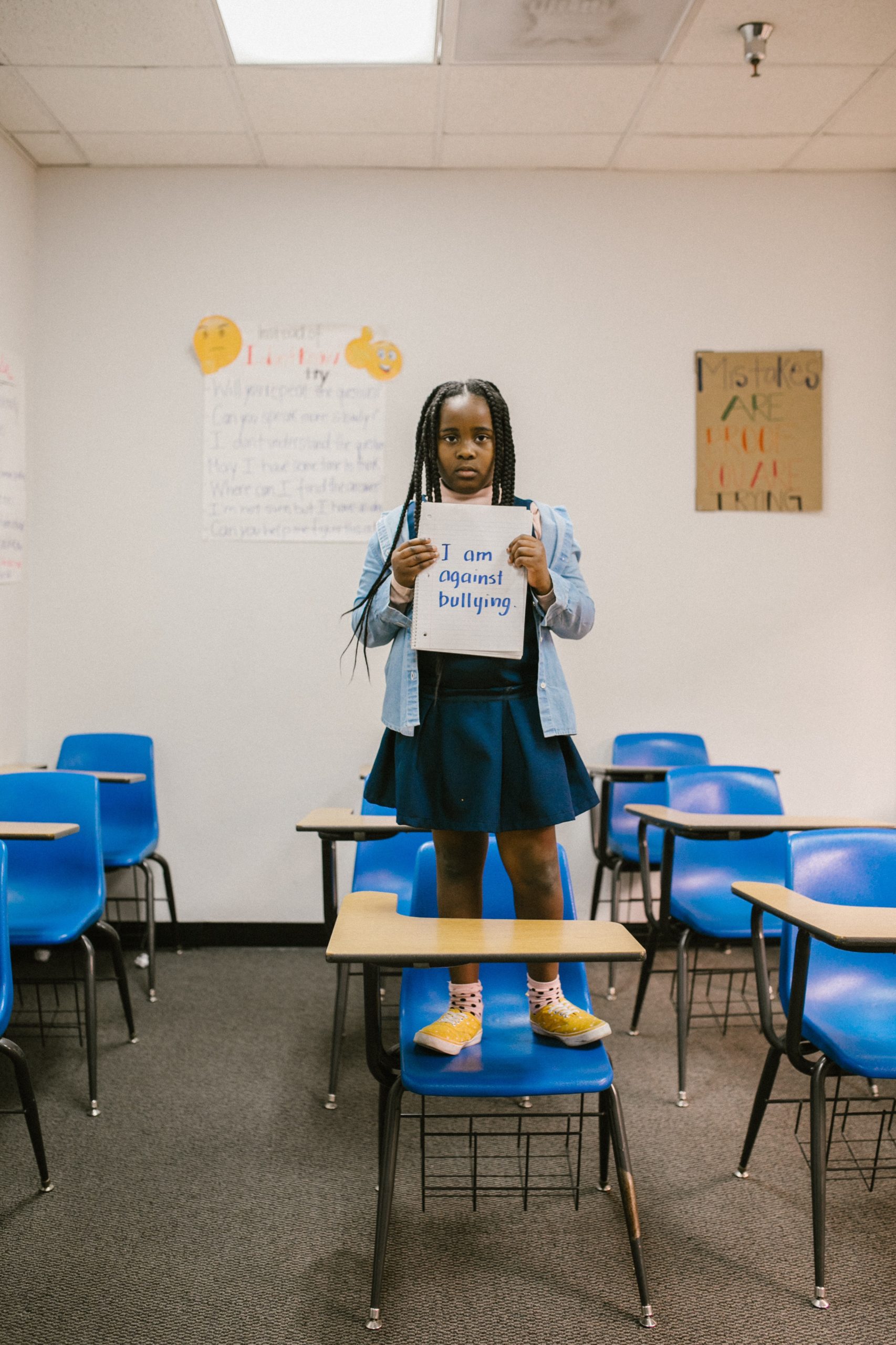
Ways to Promote Anti-bullying Practices in Schools
There are several things educators can do to help curb the spread of bullying in schools. The main focus of anti-bullying efforts should be identifying behaviors and offering assistance for those who have experienced bullying in some form or another.
Character Education Lessons
In my counseling team, we just finished our second rotation of lessons where we meet with every student’s class one time per month. Although it can be challenging to facilitate guidance lessons that include all 1000 of our students, we like the fact that it lets us connect with every student in the school. In every one of our guidance lessons, spend some time going over anti-bullying strategies. For our second rotation, this took the form of teaching students how to file an Incident Report with the assistant principal’s office if they feel someone is bothering them. In our next guidance lesson rotation, bully prevention will occur through role-playing the Four Steps of Conflict Resolution with students. We use these four steps to teach students to meet bullies head on and advocate for their own well-being and safety. In a future guidance lesson rotation, we indirectly hit on anti-bullying through role-playing how to avoid and defuse rumors and gossip as this is a huge problem in middle school. A lot of bullying at the middle school and high school level (and let’s be honest, even the upper elementary level) occurs in the form of rumors and gossip.
Here is a complete anti-bullying lesson plan that you can use with your own students during Bullying Prevention Month or at any time of the year! We also email the lessons to all the teachers of the classes where we run guidance lessons so they can participate in the lesson, if they’d like.
Student Support Groups
Another way that we promote anti-bullying efforts in my school is through the use of student support groups. Starting in early October, we run various student support groups or counseling groups that meet weekly. These support groups provide an opportunity for students who need more support than just the once a month guidance lesson. In these groups, we discuss various issues that kids struggle with such as friendship, kindness, conflict resolution, rumors/gossip, dating, body image, and more. As you can see, all of these topics and activities relate directly or indirectly to the theme of bully prevention. We use group strategies such as role plays, read alouds (one of my favorites is Letters to a Bullied Girl), art projects, and games. The Girl Project and Goals Make the Man are two of my favorite student support group guides that really reinforce bully prevention concepts!
School-Wide Assemblies
There is just something so powerful about getting all the students of a campus together in one room to fight bullying together! Many different organizations, including TEEN TRUTH, have wonderful anti-bullying presentations that travel all over the US. Alternately, some schools just bring their student body together to watch a powerful anti-bully video clip and then share the stories of some powerful community or even campus speakers to drive the video themes home!
Keep Teachers Involved
Bullies are encouraged by the sense that no one is going to fight back against them. This includes teachers. To effectively stop bullying, it is imperative that teachers are involved and on alert for signs of bullying in classrooms, the cafeteria, the playground, and even at the bus stop. Doing so will help prevent certain acts of bullying from occurring. It can also provide a sense of relief and security to the victim.
Get Parents & Families Involved
The saying goes, ‘It starts at home.’ And this couldn’t be more accurate, especially in terms of bullying and socially inappropriate behaviors. While parents must look for signs that their child is a victim of bullying, it is equally crucial to be on the lookout for signs that your child may be doing the bullying.
Bullying can stem from a number of problems, but anger, lack of confidence and control, and unstable home lives are typical the culprits. Informing parents of potential bullying triggers can help them work alongside their children to gain a more stable sense of self and eliminate their need to antagonize or harm others.
Bullying in Schools
Bullying in schools is a pervasive and serious issue that affects countless students across the world. It involves repeated aggressive behaviors aimed at causing harm, distress, or fear in another person. Bullying can take many forms, including physical, verbal, social, and online harassment. The consequences of bullying can be devastating, leading to emotional and psychological trauma for the victims and even, in some cases, tragically, to self-harm or suicide. To combat this problem, schools, parents, and communities must work together to create safe and inclusive environments for all students.
Bullying in Elementary School
Bullying in elementary schools is a concerning problem that impacts children as young as 5 or 6 years old. The early years of a child’s education are crucial for their emotional and social development, and experiencing bullying during this time can have lasting effects. Bullying in elementary school often takes the form of teasing, name-calling, exclusion from playgroups, or physical aggression. Young children may not fully comprehend the consequences of their actions, making it essential for teachers and parents to intervene and educate them about the importance of kindness and empathy. Schools must establish clear anti-bullying policies and teach students to report any instances of bullying to trusted adults.
Bullying in Middle School
Bullying in middle schools is a transitional phase where children are navigating the challenges of adolescence, and peer interactions become more complex. In middle school, bullying can escalate in severity and sophistication. It includes verbal abuse, cyberbullying through social media, gossip, and more subtle forms of relational aggression. Adolescents are particularly vulnerable to the negative effects of bullying, as they are developing their self-identity and are highly influenced by their peers. Middle schools should actively promote anti-bullying programs, offer counseling services, and engage in open dialogues with students to create a culture of respect and inclusivity. Peer support groups can also be beneficial in helping victims cope and recover.
Bullying in High School
Bullying in high school is a significant concern because it can have long-lasting effects on a teenager’s emotional and mental well-being. The forms of bullying in high school often become more advanced, with verbal abuse, cyberbullying, and social exclusion becoming prevalent. Victims may struggle with depression, anxiety, and a sense of isolation. To address this issue, high schools must take proactive steps, such as implementing comprehensive anti-bullying policies, providing counseling services, and fostering a culture of tolerance and acceptance. Encouraging students to report incidents and stand up against bullying is crucial. Moreover, educating teenagers about the consequences of their actions and promoting empathy can help reduce the prevalence of bullying in high schools and create a safer and more supportive learning environment.
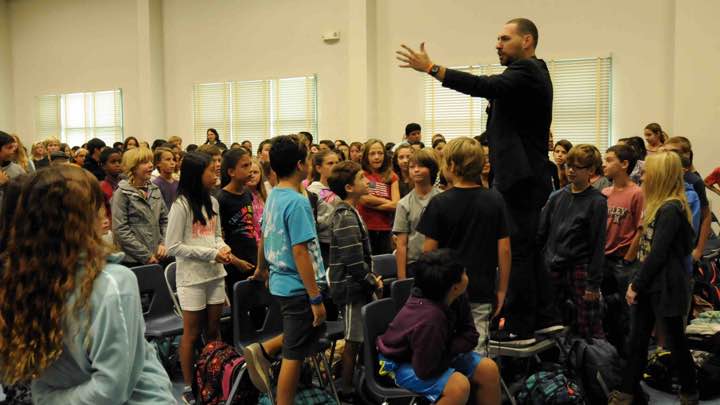
Building a Positive School Climate to Combat Bullying
While there a plenty of things you can do to help stop bullying in your schools, it is equally if not more important to dig to the root of the cause and create an environment that discourages bullying from the start.
What Schools Can Do to Prevent Bullying
There are multiple things that schools can do to not only discourage bullying but also prevent it entirely. These actions mainly hinge on identifying and stopping negative behaviors and trends before they turn into full-blown bullying.
Teach Kindness & Empathy
While it may seem obvious, explicitly teaching kindness and empathy can go a long way. Schools are a place for children to learn and grow; why not teach behavioral needs alongside academic ones?
The truth is that schools and educators will never know precisely what goes on in a children’s home or what they are being taught. For that reason, teaching children to be kind, empathetic, and accepting of others is something all schools should strive to teach and practice.
This includes teaching children to be respectful to others and be accepting and tolerant. Teach acceptance of other people’s race, ethnicity, gender identity, sexual orientation, or disability. It is not uncommon for children to be afraid or unwelcoming toward things they don’t understand. Teaching them about how people are different and encouraging understanding and acceptance will help reduce ignorance and violence later on.
Staff Training
Many of the laws and policies mentioned above require staff to be trained and ready to take action when bullying occurs.
Usually, staff training involves mandatory SEL training. Ignorance and fear are not exclusive to children; it is common for adults to overlook or react negatively to things they don’t understand. For this reason, ensuring that all teachers and staff are understanding and tolerant of things like sexual orientation, race, ethnicity, and gender identity is incredibly important.
Further staff training includes understanding how to spot bullying and the proper ways in which to report and address it. It includes appropriate consequences for the bully, detailed action plans on preventing it in the future, and supporting the victim as they process their experiences. It is also crucial to look into counseling options for both the bully and the victim to prevent further incidences.
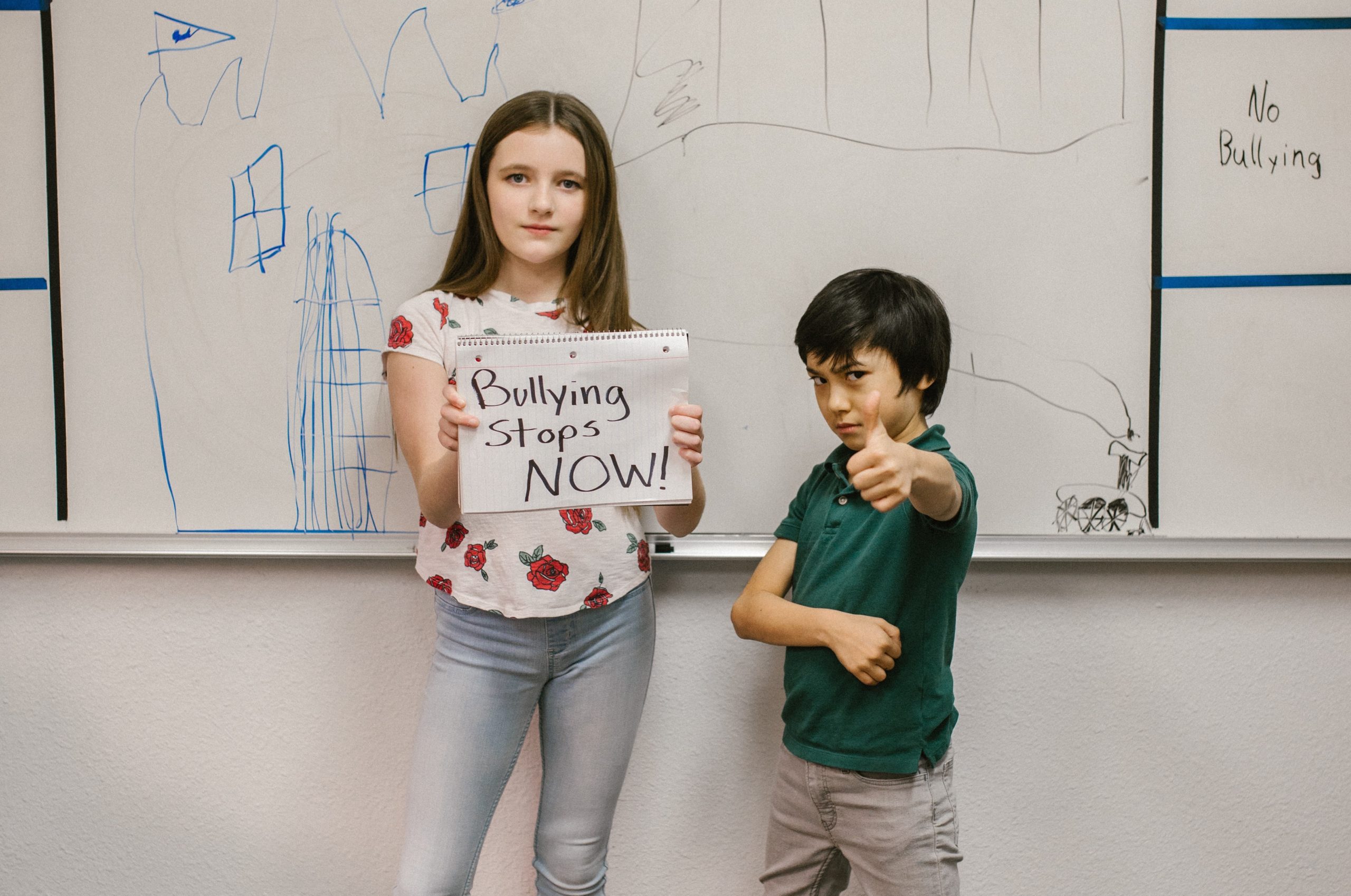
What Students Can Do to Help Stop Bullying
There are many things students can do to help; in many ways, students standing up to bullying is even more effective than staff or teachers doing so.
As you may already know, most children, adolescents, and teenagers are very impressionable and easily swayed by the opinions of others. While bullying occurs for many reasons, one of the most prevalent reasons is a lack of self-confidence and a desire to fit in. Students taking a stand and showing that bullying is not accepted or “cool” can go a long way towards preventing incidents in the future.
It is also crucial for students to properly report bullying to an adult or person in charge. This should be done regardless of whether they are the victim or a bystander. Teach children that their words matter. Having the power to stand up to people hurting them or others can help improve confidence, foster a sense of independence, and build a strong sense of community.
Types of Bullying
Bullying doesn’t come in just one form. Most bullying is a combination of different types; let’s take a look at those types below.
Identifying Gateway Behaviors
Identifying gateway behaviors is an excellent way to help understand what turns someone into a bully. It can also help with early prevention. “Gateway behaviors” to bullying are behaviors that most would consider socially unacceptable. Examples of socially unacceptable behaviors include:
- Deliberate exclusion
- Ignoring
- Laughing and whispering at someone in front of them
- Eye-rolling
- Name-calling
- Embarrassing or humiliating someone in person or online
- Encouraging peers to mistreat or ignore another person
These behaviors are called “gateway” behaviors for a reason; while single instances don’t necessarily indicate a bully, the repeated demonstration of these behaviors can be cause for intervention.
Direct Bullying & Indirect Bullying
Direct bullying is likely what comes to mind when most people think of the word ‘bully.’ It includes verbal harassment: name-calling, insulting, teasing, or embarrassing a peer in front of others. It can also spiral into physical violence.
Indirect bullying is just as common, sometimes even more so, but can be harder to spot. Indirect bullying is mainly mentally and emotionally charged. It includes spreading rumors, shunning or ignoring a peer, or encouraging others to end their friendships or relationships with the victim.
Verbal & Physical Bullying
Verbal bullying is usually the predecessor to physical bullying. The majority of verbal bullying does not result in physical bullying. However, it typically happens after a bully has exhausted their interests in verbal bullying or is struggling to feel the sense of power that comes with bullying.
Physical bullying is almost always a form of violence. It includes pushing, shoving, tripping, and hitting or kicking the victim. Physical bullying can also refer to things done to annoy intentionally or inconvenience the victim. It includes destroying property, or doing something that may result in the victim hurting themselves (ex. tying someone’s shoelaces together).
Cyberbullying
Cyberbullying is a relatively new form of bullying. It has gained exposure and popularity since the rise of social media. However, it can be one of the most insidious forms of bullying because there is no escape from it; victims are tormented both at home and behind a screen. Cyberbullying can also encourage people who typically may not bully face to face because they can often remain anonymous, and the consequences seem so much less severe.
Examples of cyberbullying include posting photos online to embarrass someone, harassment of a person via messaging apps, leaving nasty comments on someone’s social media profile, or creating fake profiles of people to humiliate them.
Anti-Bullying Laws & Policies
While there is no federal law to prevent bullying overall, multiple states and cities have taken action and implemented anti-bullying policies in their schools. Most state laws require schools to implement some kind of anti-bullying agenda and sufficiently report and address bullying when it occurs.
Few states consider bullying a criminal offense; instead, they focus on assisting the victims and preventing bullying from escalating and spreading to violent or harsh behavior.
To take a look at bullying policies by state, visit www.stopbullying.gov
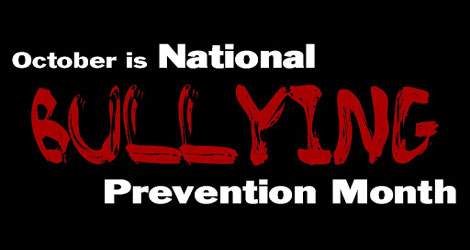
Anti-Bullying Resources and Hotlines
When you are being bullied or otherwise tormented at school, it can make you feel like you are alone. It can also lead to feelings of helplessness, frustration, and a lack of control. We have seen firsthand some of the tragic and often violent ways that victims at their breaking point have lashed out at their tormentors.
Don’t let it get that far. If you or someone you love is a victim of school bullying for any reason, please take a look at the following resources to learn how you can get help:
STOP BULLYING NOW HOTLINE: 1-800-273-8255
- This service set up by the U.S. Department of Health and Human Services is available 24/7
NATIONAL SUICIDE PREVENTION LIFELINE: 1-800-273-8255
- Support on suicide prevention and mental health available 24/7. They also have a dedicated website available in Spanish.
SUICIDE NATIONAL HOPELINE: 1-800-784-2433 Spanish: 1-888-628-9454
- Available 24/7 in English and Spanish.
INTERNATIONAL BIPOLAR FOUNDATION: 1-800-784-2433
Because it offers bilingual suicide prevention, this hotline does get busy at times and can have limited resources.
NATIONAL EATING DISORDERS ASSOCIATION: 1-800-931-2237
- This hotline offers help and advice for people affected by anorexia, bulimia, and other eating disorders. Open Monday-Thursday from 9am-5pm and Friday from 9am-9pm and Friday from 9am-5pm, excluding public holidays.
ANAD: 1-800-931-2237
- This hotline provides support and encouragement to people suffering from eating disorders and even provides referrals for treatment. Open Monday-Friday from 9am-5pm.
THE TREVOR PROJECT: 1-866-488-7386
- This helpline assists with suicide prevention in the LGBTQ+ community. Available 24/7.

Stephanie Lerner
School Counselor, TEEN TRUTH

